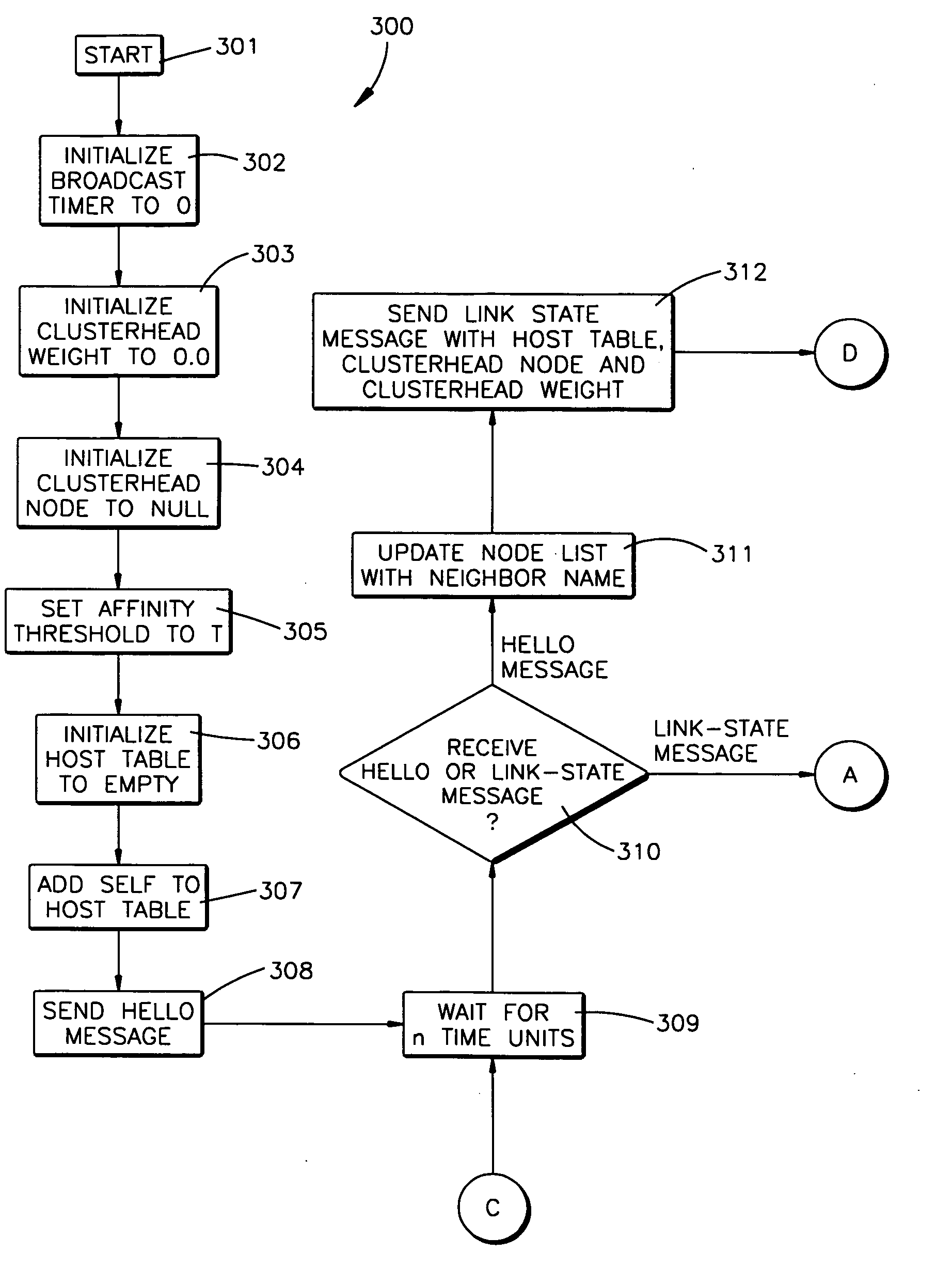System for creating optimally-sized clusters
a clustering and cluster technology, applied in the field of clustering systems, can solve the problems of increasing overhead, large clusters incur high management overhead, and a lot of inter-cluster communication, and achieve the effect of increasing the size of the node lis
- Summary
- Abstract
- Description
- Claims
- Application Information
AI Technical Summary
Benefits of technology
Problems solved by technology
Method used
Image
Examples
Embodiment Construction
[0015]A system in accordance with the present invention may create optimally sized clusters from a network of wireless mobile nodes using only local information available at the nodes. The system may identify gateways for the clusters and establish routing within the clusters as well as between the clusters. The system may enable the clusters to dynamically reconfigure themselves when the topology of the network changes significantly, with minimum overhead. Otherwise, the system may remain stable.
[0016]A system in accordance with the present invention may allow all nodes in a network to compute a numerical value called a “weight” based on neighborhood topology, importance, configuration, and other characteristics. The node with the highest weight in a neighborhood may become a clusterhead. Nodes having lower weights, in proximity to a clusterhead, then defer to the clusterhead node and thus join a cluster. A cluster may be a virtual grouping of nodes that have the same clusterhead n...
PUM
 Login to View More
Login to View More Abstract
Description
Claims
Application Information
 Login to View More
Login to View More - R&D
- Intellectual Property
- Life Sciences
- Materials
- Tech Scout
- Unparalleled Data Quality
- Higher Quality Content
- 60% Fewer Hallucinations
Browse by: Latest US Patents, China's latest patents, Technical Efficacy Thesaurus, Application Domain, Technology Topic, Popular Technical Reports.
© 2025 PatSnap. All rights reserved.Legal|Privacy policy|Modern Slavery Act Transparency Statement|Sitemap|About US| Contact US: help@patsnap.com



